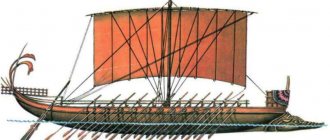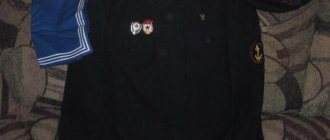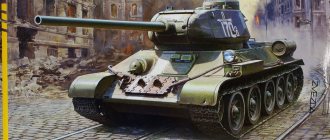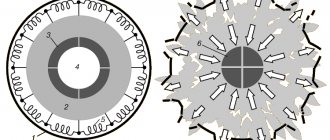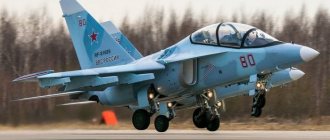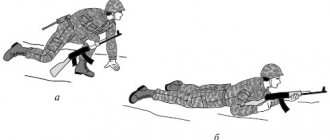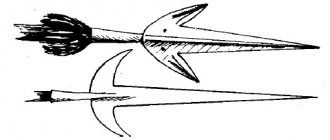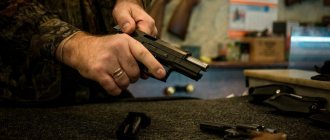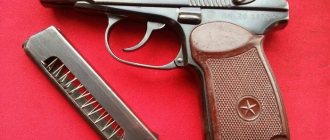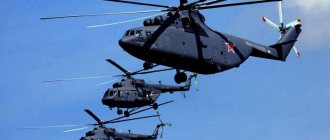1.1.Storyteller
The storyteller walked from village to village and chanted about heroic heroes and their exploits. He talked about how it was: about the deeds and victories of the heroes, about how they defeated evil enemies, defended their land, showed their bravery, courage, ingenuity, and kindness.
This is how the epic was composed. Among the Russian people, epic stories about mighty heroes have been passed down from mouth to mouth for many centuries, from grandfather to grandson. The epics reflected the life of the Russian people, which was very difficult in Rus'.
Extinction or rebirth
Despite the fact that clubs and clubs are a thing of the past, following spears, bows and swords, their descendants continue to live and seriously influence the destinies of people. The heavy police baton used in many countries is nothing more than a club.
With the exception of the expansion at the pommel, which makes it difficult to quickly remove the special equipment from the belt, the baton performs the same functions as it did hundreds of years ago. Of course, the alert reader will point out an additional handle taken from the Japanese tonfa, but, in fact, the tonfa was also born as a club.
Recently, among motorists, and not only, a sport exotic in European countries, baseball, has become popular.
Of course, bat users most likely have not heard of any pinchers and runs.
A baseball bat is essentially a classic club. And another question is for whom the bat is more dangerous, against whom it is used or for the owner himself.
In Third World countries, clubs and clubs are still used today. In Africa, the Maasai tribe even makes money from this by selling their runga to tourists and taking funny, but completely identical pictures with them.
1.3. Education and origin of heroes.
The limitations of written sources do not allow us to describe with absolute accuracy the process of educating a Russian hero. According to legends, the heroes of the heroic outpost were sworn brothers and stood guard over the borders of Holy Rus'. We read from A.S. Pushkin: “Before dawn, the brothers go out in a friendly crowd for a walk, to shoot gray ducks. Amuse your right hand, rush the magpie to the field, or cut off the head from the broad shoulders of a Tatar, or drive the Pyatigorsk Circassian out of the forest.” The formation of the hero is known mainly from epics and legends. The main concepts of the code of honor of heroism were Faith, Word, Deed, Path, Purpose, Measure.
Sword
The sword is not just a Russian weapon, but a symbol of military power. They swore with the sword in a dispute, they talked to it, they gave it a name, this name was written out by ancient masters in the upper third of the blade.
The sword was made from a new material for humanity - metal. It was not easy to get, it was unacceptable to forget and it was shameful to lose. It was exclusive to the owner, and it is not yet clear who actually owned whom.
The sword was bought for an amount of gold equal to its weight. To avoid a bad purchase, the sword was tested, first of all, by its ringing: the longer, higher and purer the blade’s ringing, the better the metal. He also had to easily and without dullness chop through a thick nail and cut the fabric thrown onto the blade.
The armament of the troops of the times of the first Russian princes can be judged mainly from the largest ancient Russian necropolises, where both ordinary soldiers and representatives of the nobility are buried according to the pagan rite of corpse burning (with minor exceptions). The concentration of finds coincides mainly with the largest urban centers (Chernigov. Gnezdovo-Smolensk, Timirevo-Yaroslavl), combat camps (Shestovitsy, Chernigov region), areas of active agricultural and trading activity (south-eastern Ladoga region, Suzdal opole).
Many mounds from the 10th century. provide weapons to professional warriors-combatants who formed the basis of the ruling class. In these burials (547 of them were recorded), weapons are not an ethnic, but a social indicator.
Accurate calculations of archaeological complexes containing weapons made it possible to state a relatively high degree of militarization of society in the 10th century, in which every fifth to tenth man carried weapons, as well as significant technical equipment of the army, in which one out of three warriors had two or three types of weapons.
2.1.Armor of a Russian hero
According to ancient Russian concepts, combat clothing without a helmet was called armor. Unlike an ordinary person, a warrior needs protective ammunition that will protect his body from injury on the battlefield. This is not just an accessory, these are vital items. Reliable armor also influenced the enemy’s mood. When the enemy saw a good defense, it could throw him off balance a little.
Shield
. Initially, shields were made of wood and were very light. With such a shield it was possible to easily move during the battle, but this reduced the degree of protection, since wood is far from the most durable material. Such a shield was made in full height, and it had holes for the eyes. In the 10th century, this means of defense began to be covered with metal, which made it more reliable. Such protection could even be used as a weapon.
Helmet.
In the early stages of the formation of Rus', warriors did not use protective headdresses.
Later, helmets began to appear that were made of metal plates and had a cone shape. Thanks to this shape of the helmet, the head was maximally protected from the blows of the sword; it simply slipped off it. The inside of the helmet was lined with leather, which softened the blow. A metal helmet with a chainmail aventail
protected the back of the head, cheeks, neck and shoulders.
Chain mail.
The main type of ancient Russian armor from the times of Kievan Rus was chain mail.
The chain mail weighed about 10 kilograms and consisted of metal rings tightly adjacent to each other. It was invented in the 4th century. BC. by the Celts. In Russia, its production was mastered no later than the 10th century .
Making chain mail is a very complex, delicate and long process. The chain mail was woven from steel rings, sometimes in 2-3 layers. The chain mail resembled a mesh tunic, hung down to the knees and had slits in the front and back for ease of riding.
Later, the heroes began to have nagovitsa (iron stockings)
),
aventail
(metal mesh around the neck),
bracers
(metal gloves).
, ringed armor
and breast armor made of rings and plates connected together, arranged like fish scales,
are becoming widespread Such armor was called bakhterets. Bakhterets was assembled from oblong plates arranged in vertical rows, connected by rings on the short sides. The most ancient Russian armor (armor)
was made of rectangular convex metal plates with holes along the edges. Leather straps were threaded through these holes, with which the plates were tightly pulled together. From the 11th century, other armor began to appear - scaly. The plates of such armor were attached to a fabric or leather base on one side and secured in the center. Lamellar armor, in contrast to chain mail armor made of metal rings, was called plank armor because its plates resembled convex planks.
Knife
Any knife exceeding 20 cm in length is considered a combat knife. The knife was thrown at the enemy, and Slavic warriors were distinguished by very good accuracy in this matter.
There was also a rather strict custom that operated in remote northern villages until the 19th century. Village boys, armed with knives, gathered in a hut at night, where they turned out all the lights and staged a knife fight “all against all,” and hit with full force. What is surprising is that there were almost no casualties, apart from minor cuts and abrasions. Scientists in this capture an echo of the ancient discipline of training young warriors: the hero must not only see, but also feel the blow coming at him, be able to parry it without the help of his eyes and correctly strike back.
3.1. How do my classmates and friends imagine the hero?
Warriors in Ancient Rus' were highly revered and respected. What did the ancient Russian warrior look like in epics? Bogatyrs are described as large, stately and broad-shouldered men with a loud voice. Such warriors have heavy hands with short fingers and slanting fathoms in the shoulders. The hair of Russian heroes reached to their shoulders, and their eyebrows were very bushy. The epic warriors were indifferent to food, but loved to sleep. It was believed that it was in their sleep that they gained strength. But in epics and legends the image of the hero was often exaggerated. The pictures depicting heroes show us simply enormous men. They easily hold their heavy armor and weapons as if they were feathers. In reality, there are very few such people, but this does not exclude the fact that in Ancient Rus' there were truly brave and strong warriors.
What did the Slavic warrior really look like? What clothes did you wear in everyday life? What were his armor and weapons? I asked my classmates to draw an image of a hero and display the facts of their biography. In the pictures you see heroes.
Conclusion:
Students draw weapons and armor correctly, but there are drawings that do not correspond to the truth.
Battle ax
The ax has also served the heroes faithfully and faithfully since time immemorial, but on foot. It was an indispensable tool for the installation of military mechanical devices, fortification barriers and for clearing roads in the forest. An ax in good hands could easily split a shield or tear chain mail.
A characteristic feature of the Russian ax is a mysterious hole on the blade. Scientists have put forward various hypotheses - from the fact that this is the mark of a master to the fact that a rod was inserted there so that the ax would not get deeply stuck upon impact. In fact, everything turned out to be much simpler: a leather case was fastened to this hole for safe transportation, and the ax was also hung from the saddle or on the wall.
3.2.Results of the survey of respondents
I invited 2nd grade students to recognize and name the weapons and armor of the heroes depicted in the pictures.
68 2nd grade students took part in the survey. They were asked questions:
1. What types of weapons and armor of Russian heroes do you see in the pictures?
2. What is unnecessary in the pictures?
The survey results are as follows:
The respondents named the following out of 19 types of weapons and armor.
Conclusions:
students know the shield, sword, helmet, dagger well, the names of other types of armor and weapons of heroes are difficult.
- What is unnecessary in the pictures?
Conclusions:
respondents showed ignorance of the armor and weapons of heroes, this is evidenced by the numbers.
Thus, the practical significance is proven
my work: students who become acquainted with my work will be able to learn to recognize the weapons and armor of Russian heroes and explain their purpose. My work will also be useful to those who want to know the history of Russian weapons.
Saber
The fundamental difference between a sword and a saber is that a sword is a cutting weapon, while a saber is a cutting weapon.
The Slavs began to use the saber in the territories bordering the nomads: since they had to resist light horsemen, and it was very convenient for mounted warriors. It is believed that the Slavs, having adopted the saber from the steppe people, advanced its distribution further - to Western Europe.
Ryazan prince
Georgy Yudin. Dobrynya Nikitich's campaign against the fierce serpent. Illustration for the epic. Year unknown
Andrey Ryabushkin Dobrynya Nikitich. Illustration for the book “Russian epic heroes”. 1895
Georgy Yudin. Dobrynya Nikitich and the Tatar hero-fighter. Illustration for the epic. Year unknown
According to epics, Dobrynya was born in Ryazan at a time when Ryazan was “reputed as a village.” Many researchers believe that this hero was of a princely family. His father Nikita Romanovich was a “prince without an inheritance”; he died at the age of 60, leaving a young wife and an infant son. Mother Amelfa Timofeevna gave Dobrynya a good education. In the sciences, he kept up faster than his peers; at the age of 12 (in some versions - 15) years, he mastered the wisdom of war. Vladimir Propp wrote:
MACE
Over time, the club was replaced by a mace - a wooden or forged handle with a metal spherical, sometimes spiked, top. One of the advantages of this weapon was the way it was used. The mace could be both thrown and used in close combat. However, due to the center of gravity shifted to the end opposite from the warrior, the weapon required remarkable power. Only a true strongman could control the mace during a fight. The weapon was suitable only for the strongest and most powerful knights. It is not surprising that of the entire brethren of heroes, those who are physically strong use maces and clubs. And heroes famous for their cunning or ingenuity are more likely to shoot from a bow.
WHY DOES A HERO HAVE A WONDERFUL WEAPON?
If the hero is by definition powerful, and only a hero of exceptional strength can take possession of the treasure, the question logically arises: why does he need a magic weapon at all? Are his amazing abilities really not enough to defeat the enemy with an ordinary sword?
It's not easy to answer. First of all, you need to remember about borrowing the name of the blade from real-life types of weapons, for example, encircling swords. It could well be that initially it was not the sword that endowed the hero with any special power. The hero himself was so powerful that he was almost invincible. The exceptional abilities of the owner of the treasure were subsequently transferred to his weapon. This happened because it was easier for people to think that the hero was powerful and invulnerable thanks to his weapon (sword) or the gift of the gods. Traditionally, the epic hero defeats the enemy or achieves success not through his own talents.
We remember that according to one version, epics originated from myths. This fact indicates a feature common to a number of epics - the divine origin of weapons. In addition, the hero can go to perform feats only when the gods or higher beings allow him. In many legends of world folklore, right and wrong are determined by the sky. The gods celebrate their chosen one by giving him possession of a certain artifact. It could be a sword, bow, horse, chariot, or any other object with magical properties. In a word, some kind of curiosity in which lies the power of the heavenly inhabitants. It is she who helps the main character win. Thus, the treasure sword proves that the heroic mission is justified, as well as permitted and approved by the gods.
Share link
